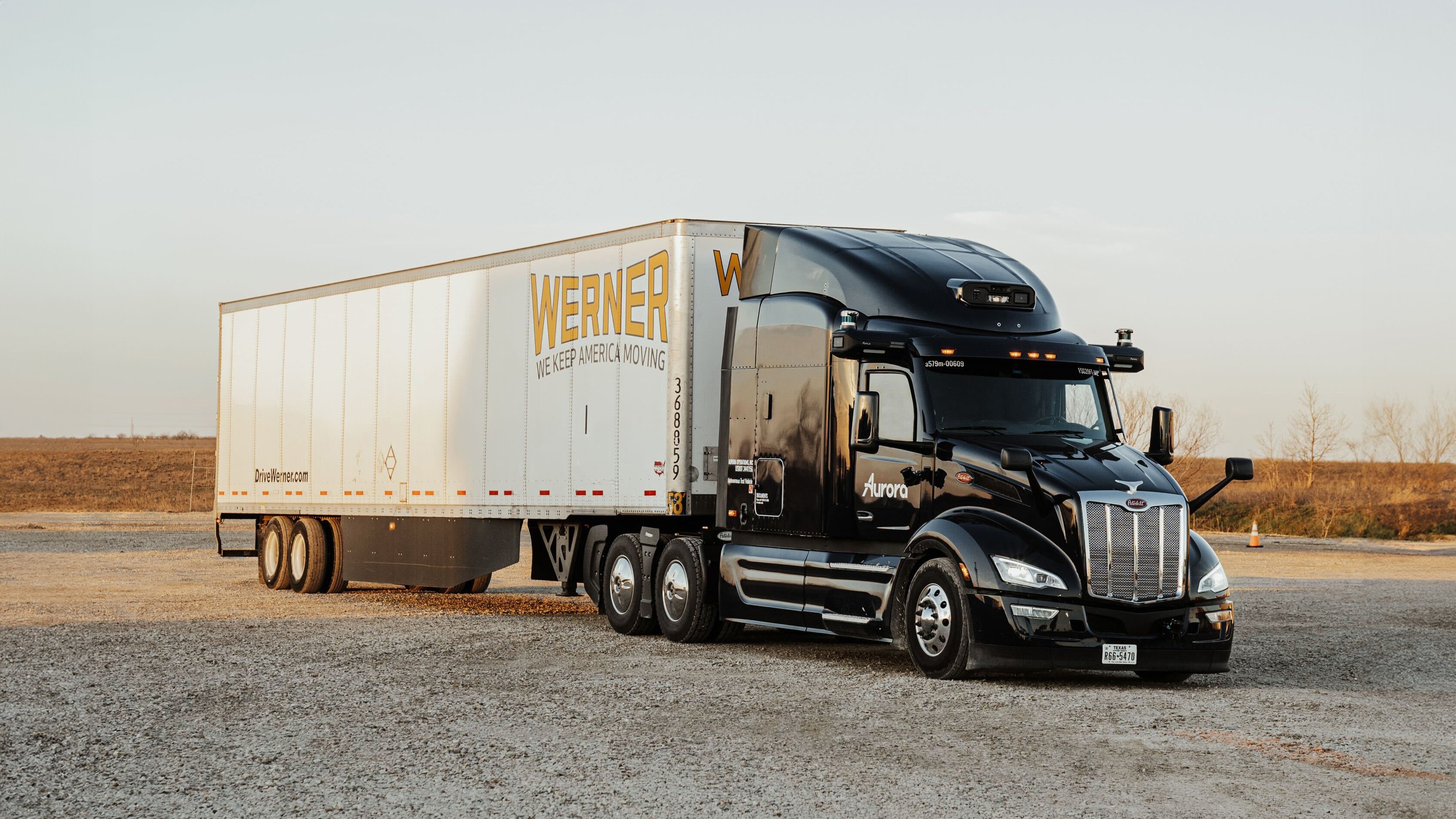Autonomous Trucks 101 with PACCAR and Werner
March 27, 2025 | 2 min. read

What does it take to build a world-class ecosystem to make autonomous trucks a reality? We recently joined PACCAR and Werner to discuss.
Trucking is the backbone of the American economy, yet it’s strained by driver shortages, supply chain inefficiencies, and rising costs – challenges autonomous trucks can alleviate. When it comes to manufacturing and operationalizing autonomous trucks at scale, Aurora's strategy has been simple: build an ecosystem of industry-leading partners and customers while we focus on what we do best – autonomous vehicle technology.
Aurora Co-Founder and Chief Product Officer Sterling Anderson recently participated in an MIT Club of Northern California event joined by General Manager of PACCAR’s Innovation Center, Paul Konasewich, and Executive Vice President and Chief Information Officer of Werner, Daragh Mahon. In a discussion about manufacturing and deploying autonomous trucks at scale, they also shared their perspective and vision for how this technology will transform trucking and help address longstanding industry pain points. Below is a roundup of the most insightful things we learned from the panel.



Autonomous trucks can solve industry-wide problems
The trucking industry is grappling with a massive driver shortage – 60,000 and counting, according to the American Trucking Association. With more than 70% of U.S. freight hauled by trucks, this shortfall threatens supply chains and economic stability. Autonomous trucks offer a powerful solution, keeping goods moving efficiently while addressing the strain on the workforce. The $1 trillion U.S. trucking market presents a prime opportunity for early adoption of cutting-edge autonomous technology, utilizing innovation to meet a real structural need.
Autonomous trucks can improve truck driver jobs
Trucking is a challenging job. When drivers work cross-country routes, they can be away from home for days or weeks at a time. Autonomous trucks can take on the more arduous middle-mile routes between cities, relying on human drivers to handle the shorter local hauls. This can create more opportunities for drivers to stay local and sleep in their own beds at night.
“Drivers are a community that has supported this industry for a long, long time, and will continue to support it well into the future. We don’t think of autonomy as replacing drivers. Rather, it augments the driver community and the fleet.” - Daragh Mahon, Werner Enterprises
Autonomy can help the trucking industry meet tomorrow's demands
Today’s drivers are limited to 14-hour shifts and a maximum of 11 hours of driving due to hours-of-service limitations. Autonomous trucks, capable of running 24/7/365, will help maximize assets that would otherwise sit idle and deliver significant efficiency gains.
Autonomous trucks also have the potential to boost a carrier’s overall capacity. Mahon shared that today, Werner provides a suite of transportation solutions to their customers including their owned fleet, intermodal transport, and logistics management. The emergence of self-driving trucks can serve as another tool to help carriers like Werner meet growing customer demand for capacity.
Strong industry partnerships are not just valuable – they are foundational to driving innovation and creating a world-class business. Together, we are ushering in a new era of transportation.
.png?width=1200&length=1200&name=Aurora-2025-Social-PACCAR_Werner_Aurora_Panel-V1-04%20(1).png)


Delivering the benefits of self-driving technology safely, quickly, and broadly.